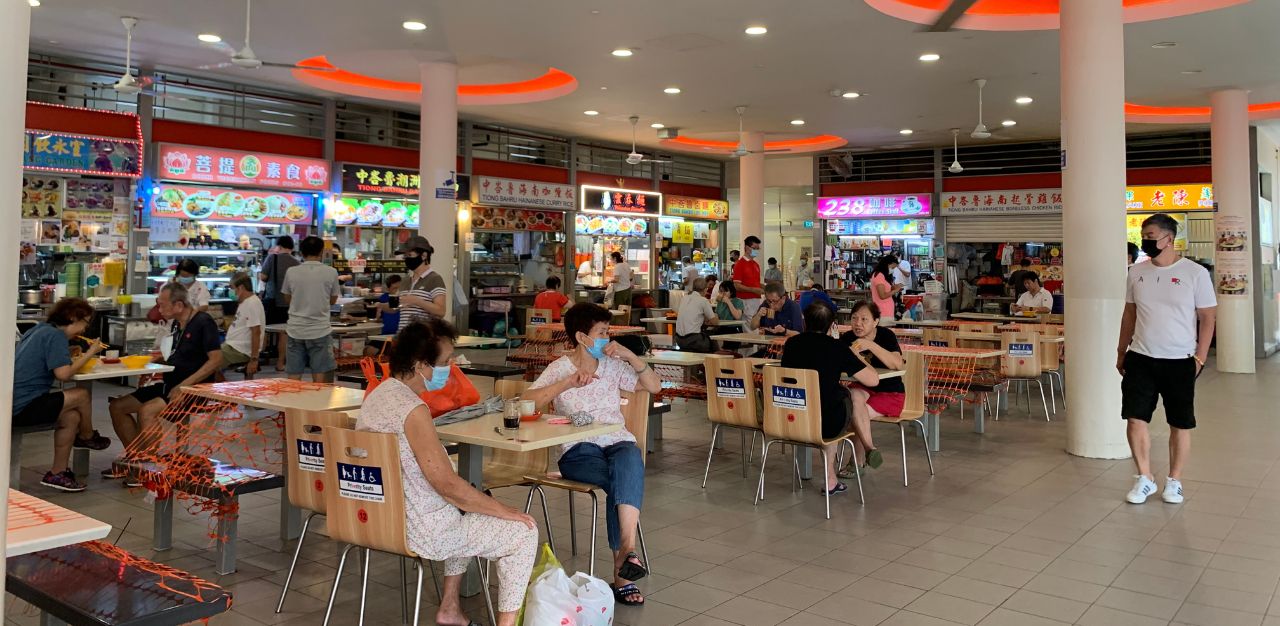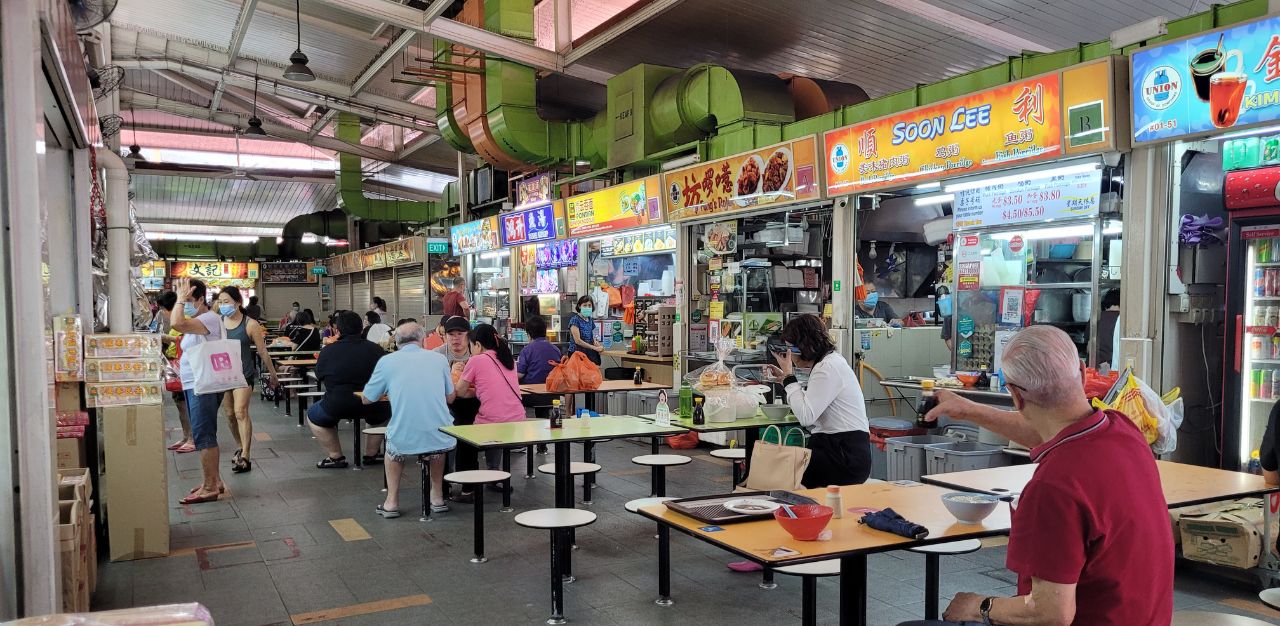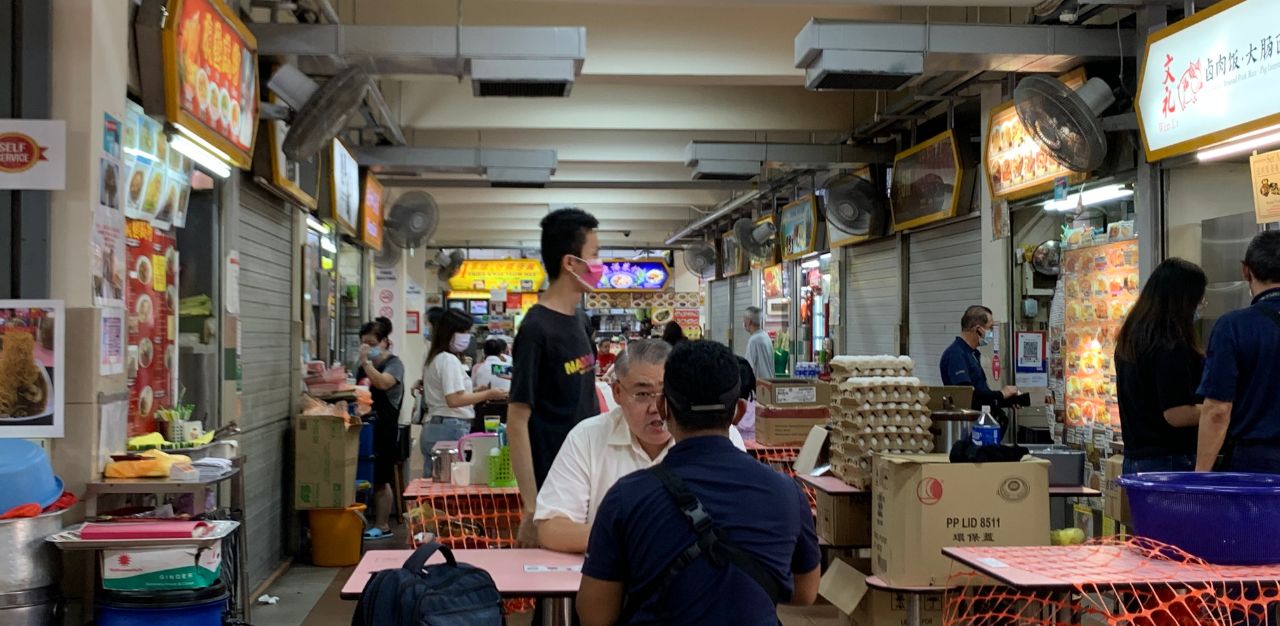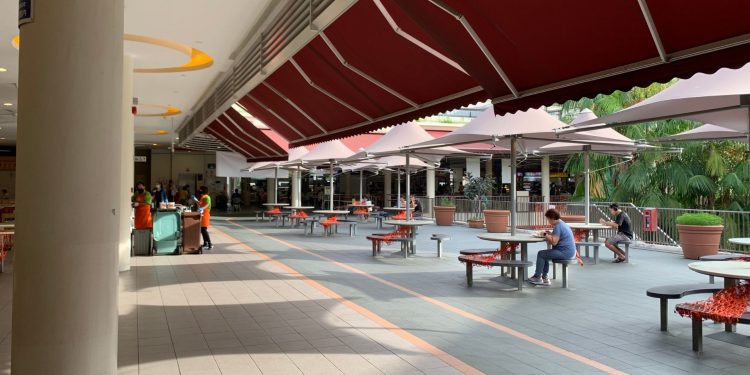Hit them where it hurts. With prices of goods and services across many baskets skyrocketing, it has left Singaporean consumers feeling more than just a pinch.
Electricity tariffs shot up by an average of 8.1% from 1 July to 30 September 2022; fuel prices peaked at around S$3.37 in June 2022, an increase of almost one dollar more than the year before; and the prices of chilled chicken rose from about S$6.60 in March to S$7.22 in May. All these culminated in what hurts Singaporeans the most – food.
Food inflation reached 5.4 per cent in June, an increase from 4.5 per cent in May, according to a joint report on Consumer Price Development by the Monetary Authority of Singapore (MAS) and the Ministry of Trade and Industry (MTI). The report attributed the cause to “the result of larger increases in the prices of both food services and non-cooked food”.
While some hawkers mulled over raising their prices to offset the increasing costs, some dismayed customers made their frustrations known to vendors who increased their prices. Even the ex-michelin starred Liao Fan Hawker Chan, that once was lauded internationally as the “cheapest michelin star meal”, now sells its signature soya sauce chicken rice at about S$6.80, a leap from its S$2.50 price in 2016 when they were first awarded the star.
Everything comes with a price
Since 2018, tenders for eating houses have been awarded through a “price-quality” method.
“Under this approach, the evaluation will not just be based on price but also the quality of the proposal, and that includes the affordability of the food options,” said then Minister for National Development Lawrence Wong in his Facebook post.
He added that FoodTastic coffee shop in Choa Chu Kang Avenue 1 won the tender to operate despite its rental bid being 40 per cent lower than the highest bid, because of its “affordably-priced food options and the use of technology to boost productivity”.

Under the price-quality model, quality score accounts for 50 per cent of the evaluation and operators with affordable food options will have higher scores.
However, HDB does not control or keep track of rents between operators and individual stallholders as this is a private contractual agreement between the parties involved.
HDB’s Director of policy and planning He Kangwei, said in an online forum that “it is in the operator’s business interest to keep the rents of their stalls reasonable to retain its stallholders”.
“If the rents are too high, stallholders could move to other nearby eating establishments, resulting in vacant stalls and holding costs for the operator. Similarly, stallholders will usually also benchmark their cooked food prices to other eating establishments in the vicinity to attract diners and remain competitive,” he said.
He was replying to the concerns expressed by residents about the rising prices of food and whether the government would intervene in the pricing decisions of stallholders.
Minister for National Development Desmond Lee Facebook post on 15 July that HDB’s careful management of coffeeshops and hawker centres which are supposed to keep food options affordable and accessible in Singapore, further reinforces the HDB’s stance of a market equilibrium that allows choice and competition for stallholders and consumers.
“Ultimately, consumers should have the choice to go elsewhere and seek out more affordable options if the prices at any one coffeeshop are too high. The same applies to stallholders as well – if rents set by coffeeshop owners are too high, stallholders have the option of moving to other eating establishments, which could result in vacant stalls and holding costs for the owners,” said Minister Lee.
However the option for consumers to seek more affordable food, may not be as easily accorded to stallholders.
New markets and sunk costs
Owner and operator of Snow Mount Goreng Pisang and Char Kway Teow Lewis Sze says that most customers are understanding of price increases while some are not.
“I’ve recently increased my price by 50 cents to S$4.50. My customers are still understanding but might be unhappy if I were to raise it by a dollar. My grandfather used to sell a plate of char kway teow for S$1.50 in his time. Lower income groups who are sensitive to changes in price grumble about the increase, but as hawkers, we are understanding as well and try to charge them less when possible,” he says.
Mr Sze is the son of the hawker associate of Clementi 448 Market and Food Centre, and is speaking on behalf of his father who is currently ill. He has been working at the stall for 14 years while Snow Mount Goreng Pisang and Char Kway Teow has been around for about 40 years since his grandfather first opened it in the 1980s. A hawker associate is the chairman of the hawkers in a market, and who acts as a liaison between the tenancy manager and hawkers.
The 37-year-old says the prices of his raw materials fluctuates constantly and he absorbs the costs rather than changing his prices to reflect it, but overtime the costs of raw materials and labour only move upwards. He has been trying to hire a stall assistant for the past three months, offering to pay $1,900 a month but to no avail.
Mr Sze adds that other factors like price acceptance and taste preferences of new markets pose a consideration in moving. He also estimates that it would cost between $20,000 and $40,000 for him to move and install his equipment should he choose to relocate. He picks to remain at the market as the rent is affordable and the relationship he has with his customers.

Owner and operator of Famous Eunos Bak Chor Mee Ler Jie Wei says that the residency of staff is a consideration for moving as well.
“My stall has been in the neighbourhood for over 33 years. If we were to move for cheaper rent, it would be difficult for my staff as many of them live around the area,” he says.
Mr Ler, whose stall is situated in a coffee shop run by an operator, adds that moving is difficult logistically as the different layouts and dimensions of kitchens might mean new and customised equipment is needed.
“I’ve increased my prices by 50 cents to S$4 at the start of the year. Twenty-six per cent goes to GST and 24 cents is the increment in real terms. Since 2021, cooking oil has increased by about 15 per cent. A lot of our dry goods are imported and the cost goes to freight. I try to explain the price increase to my customers but some walk away upon hearing it. But they’ll come back sometimes after realising everyone else is increasing prices too,” adds the 36-year-old.
Mr Ler estimates that his operations would require about $10,000 to $15,000 for relocation, with about $3,000 going to transport. He also says that for a dish that has a few ingredients, his pricing is sensitive to the cost of those few components and he has diversified his revenue streams by launching a product with a convenience store.
NEA’s Group Director for Hawker Centres Andrew Low said in a 2020 media reply that his agency helps to keep food affordable by helping with labour costs and productivity.
“To assist stallholders with increasing concerns over manpower costs, NEA has also started introducing productivity measures in hawker centres, such as centralised dishwashing and automated tray return systems, with Government’s subsidies stretching over four years for existing hawker centres, where stallholders pay between 30 and 70 per cent of the cost of centralised dishwashing service,” he said.
He also said that “Hawkers’ Productivity Grant reimburses 80 per cent of stallholders’ costs of purchase of kitchen automation equipment and repairs and redecoration (R&R) works of hawker centres with the costs also fully borne by NEA or respective Town Councils”.
He added that “stall rentals are not raised because of the costs of R&R works” and “stallholders who are directly affected by these works and who are unable to operate their stalls due to the closure of the centres may be given rental remission for the duration of the works”.

How much is too much
As things stand, there is some respite as affordability concerns are largely attributed to global inflationary pressures.
The International Monetary Fund (IMF) suggested that policymakers should allow high global prices to pass through to the domestic economy while protecting vulnerable households affected by the increases because that is “ultimately less costly than keeping prices artificially low for all irrespective of their ability to pay”.
As policy makers implement policies to combat these pressures, there is the long term act of balancing the delicate scales of long term inflation with wage growth.
Like it or not, the days of S$2.50 chicken rice and S$1.50 char kway teow are all but likely fading away, although some still exist but in the odds of TOTO.
Affordability is a relative term. As much as consumers are entitled to choose between food options and stallholders to choose stall locations, consumers are afforded the choice of dining at home or establishments while hawkers are afforded the choice of other professions.
Subsumed within is ultimately a wider question of how much are consumers willing to pay to keep the hawker trade viable. And in the case of our UNESCO Intangible Cultural Heritage, sometimes the choice to stay put or move away comes more easily said than done.
In the meantime, someone has to bear the cost. If not through the pockets of buyers, sellers, or taxers, then maybe it is all three.
RELATED: The lads at Generation Coffee are breaking boundaries with affordable specialty kopi
Join the conversations on TheHomeGround Asia’s Facebook and Instagram, and get the latest updates via Telegram.














